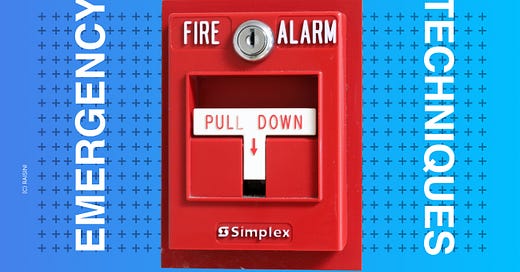10 Techniques to Save Your Life in Emergencies and Help You Become a ‘Master of Disaster’ in Any Crisis
How Smart Preparation and Rapid Response Can Save Your Life
Life can test us in ways we never anticipate. Most of us think of disaster preparedness in terms of extreme events—earthquakes, pandemics, or sudden financial collapse. But equally potent crises are often personal and come without warning: a health scare, a data breach, an unexpected job loss, or, in some cases, a life-threatening situation.
Preparedness is more than stockpiling resources; it’s a mindset that arms you with the resilience to face anything life throws your way.
How my Unpreparedness led to my Kidnapping in Ukraine
In 1997, I learned this lesson firsthand in Ukraine. I arrived with dreams of becoming a pilot, only to be kidnapped and held for ransom. Over days of uncertainty, fear, and silence, I discovered the high price of unpreparedness. That experience left me with a commitment to resilience, preparedness, and a “what if” mindset that has proven invaluable ever since.
I’ll never forget the day when two men approached me and my friends in the park, claiming to be police officers and demanding our identification. They confiscated our documents and disappeared, leaving us bewildered. A month later, a supposed "KGB agent" raid landed me in the hands of unknown captors. I was blindfolded, beaten, and forced to make ransom calls to my family, my survival entirely in their hands. I was trapped in a dark, unknown place, where days passed in silence, torture, and uncertainty, wondering if I would ever see the outside world again.
This was my wake-up call. In that brutal captivity, I learned first-hand about vulnerability, resilience, and the high cost of unpreparedness. Life doesn’t always allow you the luxury of time to prepare for its curveballs, which can come in any form: a sudden data breach, a stolen phone, a health crisis, or, in my case, a terrifying kidnapping. Preparedness means more than just bracing for natural disasters; it means being ready to face personal crises with courage and a plan.
In the years since, I have rebuilt my life and businesses, learning invaluable lessons about trust, risk, and resilience. Through my experiences, I discovered that mastering disaster is not about living in fear or expecting catastrophe. Rather, it’s about equipping ourselves with the mindset and tools to handle whatever life throws our way, whether a major disaster or an everyday setback.
Over the last two decades since my kidnapping, I've come to see life through a sharper lens. I realized that we only get one chance to live, and that means learning skills to prepare for the unknown. After experiencing firsthand how quickly the ground beneath us can shift, I committed myself to mastering resilience, mental strength, and practical strategies that could make the difference between chaos and control.
The ten techniques that follow are designed to help you handle any crisis—large or small, global or personal. Supported by real-life examples and insights from survival experts, these techniques cover physical readiness, mental resilience, financial preparation, and more.
1. Anticipate and Assess: Embracing the “What If” Mindset
Key Concept: Effective disaster management starts with the ability to anticipate potential crises and mentally prepare for them. The “What If” mindset isn’t about catastrophizing; it’s about staying prepared without letting fear take over. This proactive mentality is the foundation of resilience.
Historical Example: Tokyo, located on seismic fault lines, is one of the best-prepared cities for earthquakes. Thanks to its “What If” mindset, Tokyo has implemented resilient building designs, comprehensive evacuation plans, and regular emergency drills. By proactively planning for the inevitable, the city minimizes earthquake risks and potential damage.
Action Steps:
Identify Vulnerabilities: Consider all areas of potential risk in your life—physical, financial, personal, and digital. List scenarios that could pose a threat.
Evaluate Impact: Determine the potential severity of each risk. How would an earthquake, economic downturn, or health crisis affect your life?
Establish Priorities: Rank these risks by impact and likelihood, and focus on the top ones first.
Plan for Contingencies: From family safety drills to backup finances, set up actionable plans to address high-priority risks.
Practical Survival Tip: The book Emergency by Neil Strauss recommends periodically conducting a “three-day test,” where you shut off power, water, and heat in your home to simulate a disaster. This exercise helps you identify gaps in your emergency preparedness.
The “What If” mindset is not a source of anxiety; it’s a tool for building resilience. Preparing for possibilities builds confidence and keeps you from being blindsided by life’s inevitable uncertainties.
Keep reading with a 7-day free trial
Subscribe to RΛISINI to keep reading this post and get 7 days of free access to the full post archives.





